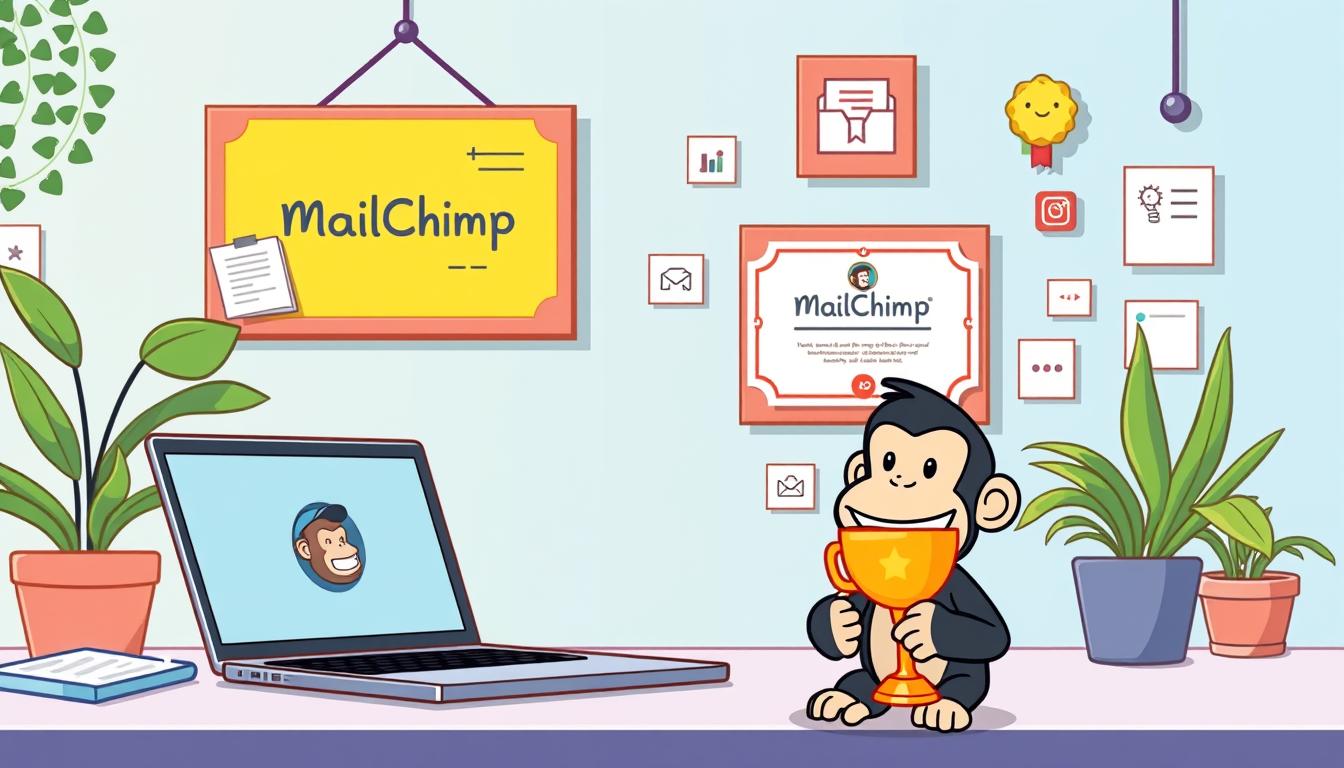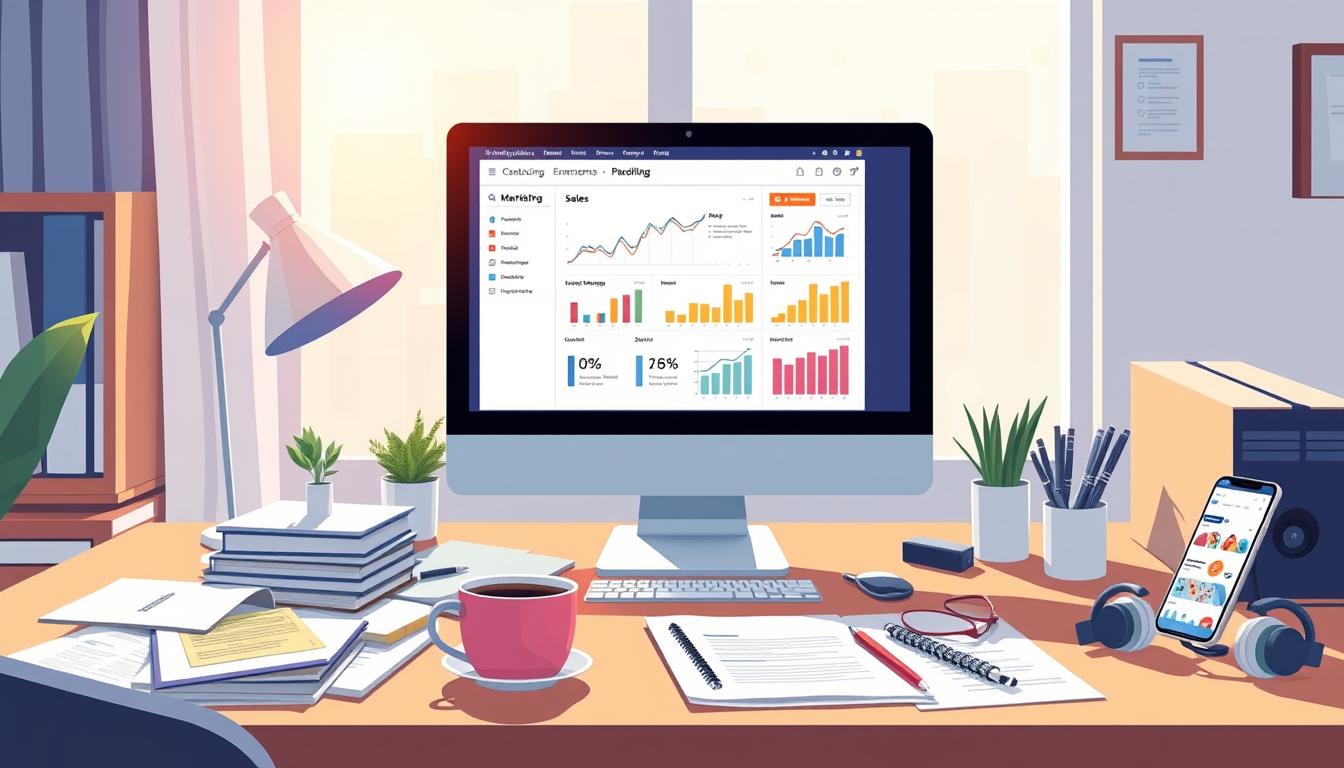Did you know that 87% of B2B marketers rely on email as a free content distribution channel? This staggering fact underscores the immense power email holds within the digital marketing landscape. As an email marketing pro, you can harness this potential to connect with your audience effectively. With every $1 spent on email marketing reportedly generating $36 in returns, it’s clear that mastering this skill is crucial for business success.
Whether you’re looking to start from scratch or enhance your existing knowledge, this article will guide you through essential tips, strategies, and metrics that will help you excel in your email marketing efforts. From understanding the basics to crafting compelling campaigns and analyzing their success, you’ll discover the tools necessary to transform your approach to email marketing. You’ll learn about effective email marketing strategies, advanced email automation techniques, and the key tools to streamline your campaign management.
Key Takeaways
- Email is a primary channel for content distribution, with 81% of B2B marketers utilizing newsletters.
- An effective email marketing strategy can yield remarkable ROI, demonstrating its ongoing relevance.
- Email automation can streamline your campaigns, making your outreach efforts more efficient.
- Understanding key email marketing tools is vital in optimizing your campaigns and measuring performance.
- Segmentation is essential for targeting specific audiences and improving engagement rates.
- Personalization techniques can enhance your customer experience and increase conversion rates.
- Regular analysis and A/B testing can help fine-tune your approach for better results.
Understanding the Basics of Email Marketing
Email marketing is a powerful tool that connects businesses with potential and existing customers through digital communication. As you dive into this field, grasping its essential components will help you become an email marketing pro. With over 333 billion emails sent daily, understanding email marketing services can significantly enhance your engagement and conversion rates.
What is Email Marketing?
Email marketing refers to the strategic use of emails to promote products or services, nurture leads, and maintain customer relationships. It started in 1978 when Gary Thuerk sent the first commercial email to 400 addresses, generating approximately $13 million in sales. This marked a pivotal moment in marketing history. Today, it remains one of the most efficient channels, with an impressive return on investment of $36 for every dollar spent.
Why Use Email Marketing?
The advantages of utilizing email marketing are manifold. This strategy fosters direct relationships with your audience and encourages user engagement. An email campaign manager focuses on crafting targeted messages, allowing you to personalize content based on demographics. Personalized and segmented campaigns can yield revenue increases of up to 760%. Thus, prioritizing best email marketing practices not only enhances customer interactions but also drives traffic to your website and social media platforms.
Key Email Marketing Terms You Should Know
Understanding certain key terms can elevate your email marketing efforts. Here are some essential concepts:
| Term | Definition |
|---|---|
| Deliverability | The ability of an email to reach a recipient’s inbox. |
| Segmentation | Dividing subscribers into groups based on demographics or behavior for more targeted communication. |
| A/B Testing | Comparing two versions of an email to determine which performs better. |
| Opt-In | The process of subscribers voluntarily joining your email list. |
| Spam | Unsolicited emails that can harm your sender reputation. |

Building an Effective Email List
An effective email list is your gateway to a successful email marketing strategy. Growing your subscriber base requires a blend of creativity, strategic thinking, and compliance with legal standards. You can implement various tactics to enhance your listings while ensuring that your audience remains engaged and responsive.
Strategies for Growing Your Subscriber Base
To effectively expand your email list, consider the following strategies:
- Leverage social media platforms to reach new audiences and convert followers into subscribers.
- Utilize lead magnets, such as free eBooks or exclusive content, to entice sign-ups. This approach can lead to a 50-60% increase in new subscribers.
- Introduce pop-up ads for returning visitors, which can generate as many as 2,689 leads in just two weeks.
- Offer incentives, such as discounts or special offers, to boost your conversion rates significantly, possibly by 25-50%.
- Implement referral programs similar to Onnit, rewarding current subscribers for referring friends.
Importance of Segmentation
Segmentation plays a vital role in your email marketing analytics. By categorizing your audience based on demographics, interests, or past behaviors, you can create targeted campaigns. This personalization leads to higher engagement rates, with statistics showing that personalized CTAs can enhance the view-to-submission rate by up to 42%.
Legal Considerations and Compliance
Adhering to legal requirements, such as the CAN-SPAM Act and GDPR, is crucial in building trust with your audience. Ensuring that your email lists are permission-based improves deliverability rates and protects your reputation. Include easy-to-find unsubscribe options to maintain a positive user experience. Strategies like these not only comply with the law but also enhance the quality of your email list.

| Strategy | Potential New Subscribers |
|---|---|
| Social Media | 15% |
| Popup Ads | 10-30% |
| Website CTAs | 15-20% |
| High-Converting Landing Pages | 50% |
| Viral Contest | 35% |
Crafting Compelling Email Campaigns
Creating effective email campaigns requires a mix of strategic planning and creativity. A strong focus on the content as well as the design will ensure that your emails resonate with recipients. Following the best email marketing practices can significantly improve your campaign performance. Consistently monitoring your metrics, such as open rates and click-through rates, will help you refine your approach over time. Additionally, incorporating personalization and segmenting your audience allows you to send more relevant content that connects with your readers. By applying proven email marketing coach tips, you can craft campaigns that not only engage your subscribers but also drive meaningful results for your business.
Writing Attention-Grabbing Subject Lines
Your subject line serves as the first impression of your email. An impressive subject line can increase open rates, enticing recipients to explore further. Statistics suggest that 90% of successful email campaigns feature exceptional copywriting. Aim to craft subject lines that are engaging or convey a sense of urgency, ultimately driving more users to open your messages.
Designing Engaging Email Content
The content within your email should be visually appealing and optimized for mobile devices, as many emails are read on smartphones. Utilize email marketing tools to enhance your email’s design by incorporating distinctive elements such as images and clear calls to action. Ensure your content includes a blend of informative and benefit-oriented copy, as 70% should educate your audience about the product, while 80% should emphasize its advantages.

Personalization Techniques that Convert
Personalization enhances the relevance of your emails. Use data-driven strategies to tailor content, such as incorporating recipients’ names and preferences, creating a deeper connection. Achieving high engagement rates often involves utilizing email automation to send well-timed, personalized messages. This approach enables you to nurture customer relationships effectively while addressing specific pain points based on individual behaviors.
Analyzing and Optimizing Your Campaigns
Mastering analysis and optimization is the final piece of the puzzle to becoming an email marketing pro. As you dive into your email marketing analytics, be sure to focus on key metrics like open rates, click-through rates, and conversion rates to evaluate the success of your campaigns. With a proper email marketing strategy, understanding these metrics propels your future efforts, allowing you to tailor campaigns that resonate with your audience’s preferences.
Key Metrics to Track for Success
Tracking the right metrics can significantly impact your email marketing services. While high open rates might suggest strong interest, remember that Apple’s privacy changes may affect how these metrics are counted. A deeper look into conversion rates reveals that discounts between 20-29% yield the best results across industries, especially during peak seasons like Black Friday. By continuously monitoring these figures, you’ll ensure that your campaigns remain effective and relevant, ultimately driving sales.
A/B Testing for Improved Performance
Don’t underestimate the power of A/B testing in optimizing your email campaigns. This approach allows you to compare different aspects such as subject lines, design elements, and content. It’s been shown that subject lines with fewer than 50 characters often outperform those that are longer, making brevity a valuable strategy. Leveraging this practice helps refine your email campaign manager skills, leading to enhanced engagement and converting potential leads into loyal customers.
Tools for Email Marketing Analytics
Utilizing the right tools for email marketing analytics can streamline your insights into subscriber behavior and overall performance. Imagine having access to predictive analytics—this has enabled brands to achieve impressive revenue growth in competitive environments. By embracing these technological advancements, you will be equipped to modify your email marketing strategy based on real-time data, ensuring optimal results and improved ROI, typically averaging $36 for every dollar spent.
FAQ
What is the significance of email marketing in digital marketing?
FAQ
What is the significance of email marketing in digital marketing?
Email marketing plays a crucial role in digital marketing due to its high return on investment, with every
FAQ
What is the significance of email marketing in digital marketing?
Email marketing plays a crucial role in digital marketing due to its high return on investment, with every $1 spent reportedly generating $36 in returns. It enables businesses to engage with customers directly and build lasting relationships.
How can I grow my email subscriber list effectively?
To grow your subscriber base, focus on leveraging social media, offering valuable content, and using lead magnets such as free resources or exclusive offers. Prioritize quality over quantity to ensure that your audience is engaged and interested.
What are some best practices for crafting email campaigns?
Effective email campaigns start with attention-grabbing subject lines and visually appealing content. It’s essential to create engaging design elements and clear calls-to-action while personalizing content to resonate with your audience’s preferences.
Why is segmentation important in email marketing?
Segmentation allows you to categorize your audience based on various attributes, enabling you to tailor your communications for better engagement. This leads to higher open and conversion rates by delivering relevant content to specific audience segments.
What key metrics should I track in my email marketing campaigns?
Important metrics to track include open rates, click-through rates, and conversion rates. These metrics help you assess the effectiveness of your campaigns and identify areas for improvement.
How can A/B testing improve my email marketing performance?
A/B testing allows you to experiment with different elements of your emails, such as subject lines, designs, and content. By analyzing the performance of these elements, you can identify what resonates best with your audience and optimize future campaigns accordingly.
What are some legal considerations I should be aware of?
It’s critical to comply with legal requirements such as the CAN-SPAM Act and GDPR to build trust with your subscribers. Failure to adhere to these regulations can result in severe penalties and damage to your reputation.
What tools can help me with email marketing analytics?
Utilizing email marketing analytics tools can provide you with insights into subscriber behavior, engagement patterns, and overall campaign performance. These tools are essential for refining your email marketing strategy over time.
spent reportedly generating in returns. It enables businesses to engage with customers directly and build lasting relationships.
How can I grow my email subscriber list effectively?
To grow your subscriber base, focus on leveraging social media, offering valuable content, and using lead magnets such as free resources or exclusive offers. Prioritize quality over quantity to ensure that your audience is engaged and interested.
What are some best practices for crafting email campaigns?
Effective email campaigns start with attention-grabbing subject lines and visually appealing content. It’s essential to create engaging design elements and clear calls-to-action while personalizing content to resonate with your audience’s preferences.
Why is segmentation important in email marketing?
Segmentation allows you to categorize your audience based on various attributes, enabling you to tailor your communications for better engagement. This leads to higher open and conversion rates by delivering relevant content to specific audience segments.
What key metrics should I track in my email marketing campaigns?
Important metrics to track include open rates, click-through rates, and conversion rates. These metrics help you assess the effectiveness of your campaigns and identify areas for improvement.
How can A/B testing improve my email marketing performance?
A/B testing allows you to experiment with different elements of your emails, such as subject lines, designs, and content. By analyzing the performance of these elements, you can identify what resonates best with your audience and optimize future campaigns accordingly.
What are some legal considerations I should be aware of?
It’s critical to comply with legal requirements such as the CAN-SPAM Act and GDPR to build trust with your subscribers. Failure to adhere to these regulations can result in severe penalties and damage to your reputation.
What tools can help me with email marketing analytics?
Utilizing email marketing analytics tools can provide you with insights into subscriber behavior, engagement patterns, and overall campaign performance. These tools are essential for refining your email marketing strategy over time.









